Hair loss is an issue that not only affects men but also causes many women to lose confidence in life when having thin hair. In recent years, hair transplant has become a cosmetic solution chosen by many women to restore the beauty of their hair naturally. So, what is the female hair transplant procedure? How much does it cost? All detailed information related to female hair transplant will be revealed in this article with Hair Transplant Experience!
Common causes of female hair loss
Hair loss in women not only greatly affects aesthetics but is also a sign of an imbalance in overall health. This process often stems from various factors related to physiological changes, genetics, and each person’s daily lifestyle. Below are typical causes of hair loss in women that you can refer to:
- Hormonal changes: Women often go through many hormonal changes in their biological life, such as pregnancy, postpartum, menopause, or polycystic ovary syndrome (PCOS). These hormonal changes directly affect the hair life cycle and can cause hair to become thin, weak, or fall out in patches.
- Genetic factors: Not only men but women can also carry genetic factors causing hair loss, especially when there is a family history of baldness or thinning hair by gender. Among these, DHT (Dihydrotestosterone), a potent form of testosterone, can shrink hair follicles, making hair gradually thinner and difficult to regrow.
- Medical conditions and treatments: Certain medical conditions, such as autoimmune disorders, lupus, anemia, iron deficiency, or metabolic disorders, can cause prolonged hair loss. In addition, treatments such as chemotherapy and radiotherapy are also major causes of temporary or permanent hair loss.
- Stress: People who are often stressed and have a nutritionally deficient diet can disrupt the natural growth cycle of hair. These factors not only cause temporary hair loss but can also prolong hair follicle damage.
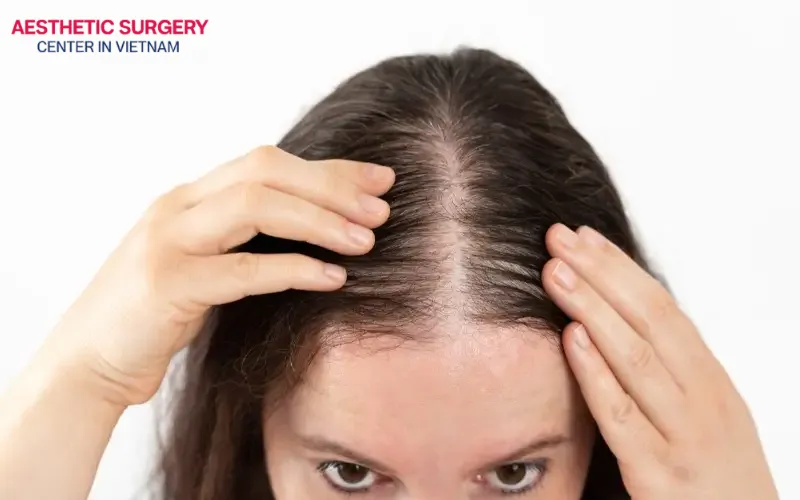
Should women have hair transplants?
Hair transplant for women is one of the modern medical solutions that helps restore hair naturally and sustainably. However, not every case of hair loss in women is suitable for this procedure.
Determining whether to have a hair transplant or not requires a thorough professional evaluation by a hair restoration specialist to ensure safety and long-lasting results. Below are some criteria to assess suitability for female hair transplants that you can refer to:
- Women with stable hair loss patterns: Women with clearly localized hair loss, such as a high hairline, thin temple hair, or thinning at the crown, will have better recovery potential compared to those with diffuse thinning all over the scalp. This allows doctors to design an appropriate transplant area that provides high aesthetic results with natural coverage.
- Having a sufficient donor area with healthy hair: Hair transplant requires using healthy hair follicles from donor areas to implant into thinning areas. Therefore, women who want a hair transplant need to have thick, strong hair in these donor areas. If the donor area is too thin or has been affected by hair loss, the success rate of transplantation will be limited.
- No uncontrolled underlying medical conditions: Those with severe uncontrolled hormonal disorders, untreated autoimmune diseases, or scalp infections may have reduced hair growth after transplantation. Properly managing underlying health conditions before undergoing a hair transplant is essential to ensure safety.
- Having realistic expectations: Hair transplant can significantly improve hair density and appearance, but it cannot turn very thin hair into extremely thick hair after just one procedure. Women should have a clear understanding of expected results before deciding. Typically, new hair takes 6 – 12 months to grow and requires strict adherence to post-procedure care instructions.
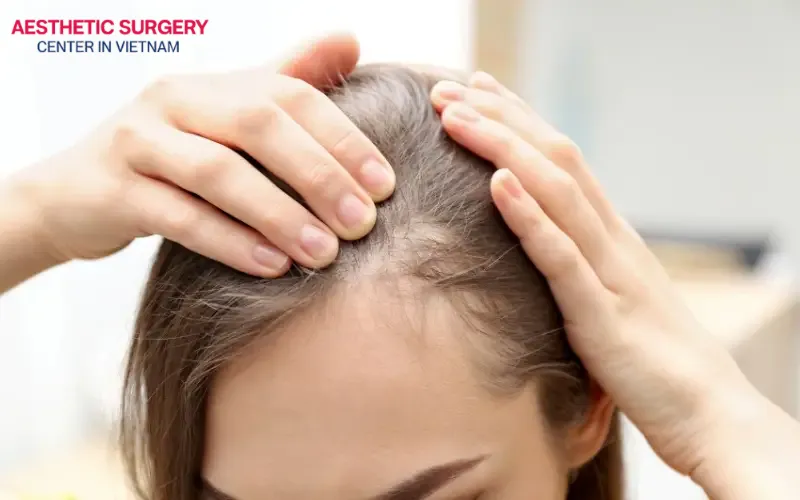
In addition to suitable candidates, there are also cases where hair transplants should be postponed or avoided, including pregnant or breastfeeding women, people with psychological disorders, those with scalp inflammation, fungal infections, or untreated medical conditions.
Read more: How long is hair transplant recovery?
What hair transplant procedures are recommended for women?
Currently, there are two main hair transplant procedures for women: artificial hair transplant and autologous hair transplant. Among them, artificial hair transplant is a procedure that uses artificial hair fibers made from synthetic materials implanted into the scalp to temporarily replace real hair.
Autologous hair transplant is a procedure that uses healthy hair follicles to transplant into thinning or bald areas. This procedure is considered the most optimal choice for women due to its absolute biological compatibility and long-lasting aesthetic effectiveness. Below are 2 common autologous hair transplant procedures you can refer to:
FUT (Follicular Unit Transplantation) – Strip harvesting
This FUT strip harvesting procedure involves cutting a strip of scalp from the donor area, then separating each follicular unit to transplant into the needed areas.
Advantages:
- The procedure time is quite fast, helping save time effectively.
- FUT hair transplant for women costs less than FUE.
- Suitable for those needing a large number of grafts in a short time.
Disadvantages:
- May cause scalp tightness after the procedure.
- Potential risk of a long scar in the donor area.
- The donor scalp loses hair follicles, creating a “dead skin” area, which affects aesthetics if wearing short hair.
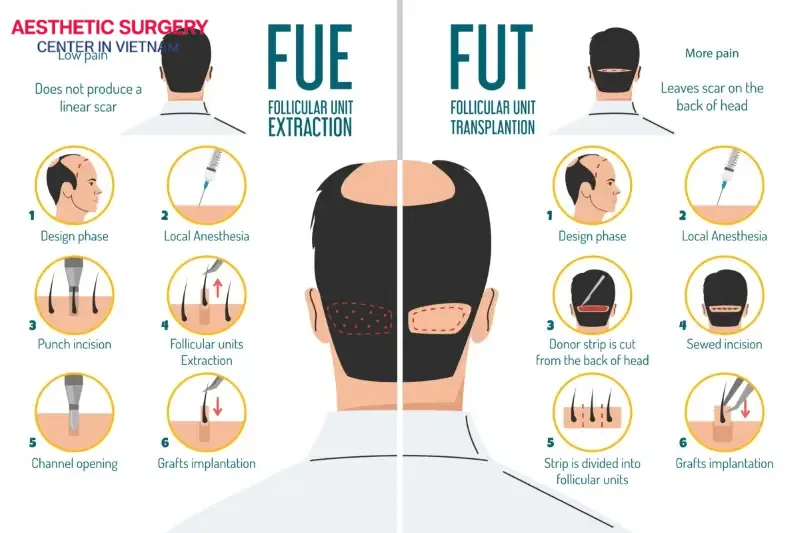
FUE (Follicular Unit Extraction) – Individual follicle extraction
FUE is a more advanced procedure that uses micro-surgical tools to extract individual hair follicles from the donor area without cutting the scalp.
Advantages:
- Provides high aesthetic results with more natural hair growth.
- Leaves no long scars and causes minimal damage to the donor area.
- Quick recovery time, minimally invasive, and significantly reduces pain after the procedure.
Disadvantages:
- Higher cost due to its technical precision and the surgeon’s required expertise.
How much does a hair transplant cost for women?
Generally, the cost of hair transplant for women ranges from USD 1,500 to USD 4,000 (equivalent to approximately VND 40,000,000 – 100,000,000) depending on the degree of hair loss, the number of grafts needed, and the transplant procedure used. Different aesthetic clinics offer various packages suited to each client’s needs and financial conditions.
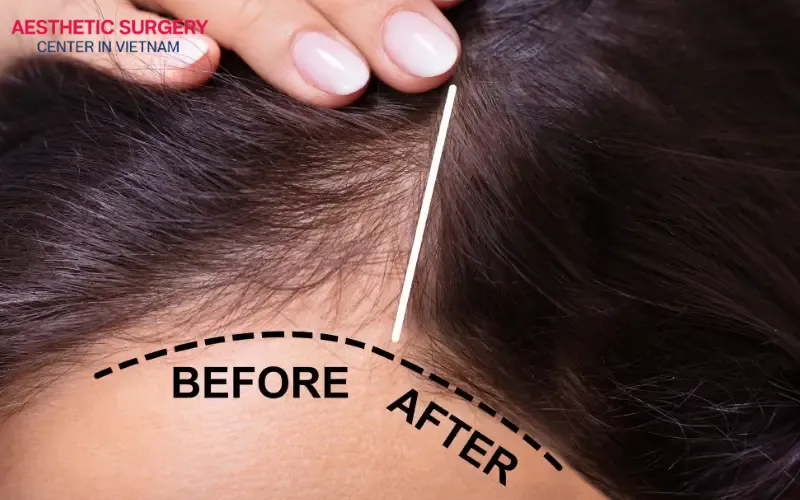
Below are some main factors affecting the cost of hair transplants for women:
- Number of grafts needed: The more severe the hair loss, the more grafts are required, leading to higher costs.
- Procedure used: FUE (individual follicle extraction) generally costs more than FUT (strip harvesting) due to its aesthetic outcomes and higher technical complexity.
- Area to be transplanted: Full scalp hair transplants are more expensive than partial transplants, such as hairline, crown, or parting area transplants.
- Hair and scalp characteristics: People with curly, thick hair or oily scalps may face more challenges during the transplant process, affecting the overall cost.
- Reputation and expertise of the clinic: Clinics with highly experienced hair transplant surgeons usually charge higher prices compared to those that do not meet full medical safety standards.
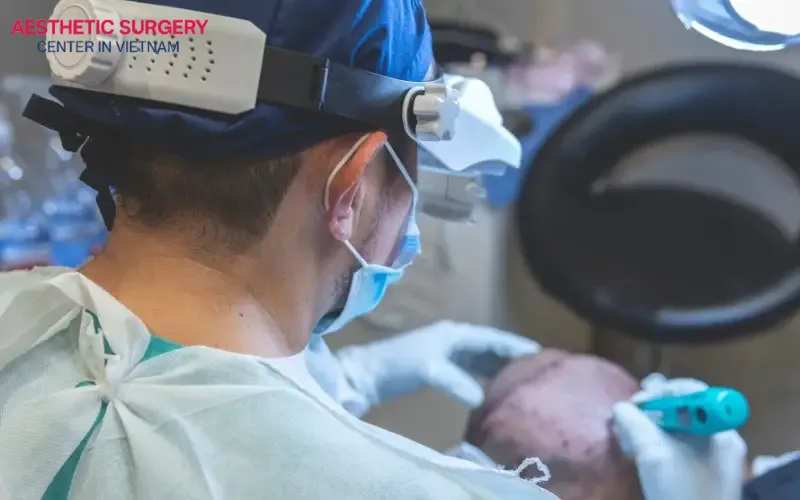
Common Pitfalls in Female Hair Transplantation
Although hair transplant is considered a minimally invasive procedure with high safety, it still carries certain risks if the procedure is not performed correctly. Below are some potential risks of hair transplantation for women that you can refer to:
- Incorrect hairline reconstruction: Failure to implant hair following the natural growth direction and density of the parting line can result in stiff, unnatural hair with a lack of balance.
- Insufficient graft density: In cases of diffuse hair loss across the entire scalp, the density of hair follicles may be evenly reduced, affecting effective follicle distribution. Therefore, after hair transplant for women, the hair may lack the necessary thickness and fail to achieve the desired aesthetic outcome.
- Donor area thinning: Overharvesting the donor area can lead to visible thinning and unwanted patches of sparse hair. Ensuring natural hair density in the donor area is essential to achieve high aesthetic results.
- Pluggy hairline resembling a wig: Not using single-hair grafts for the first rows of the hairline can create a pluggy effect, making the hairline appear coarse and artificial like a wig.
- Other complications: Swelling, mild bruising, temporary folliculitis, small scars in the donor area, and early hair shedding after transplantation are some possible risks during female hair transplantation.
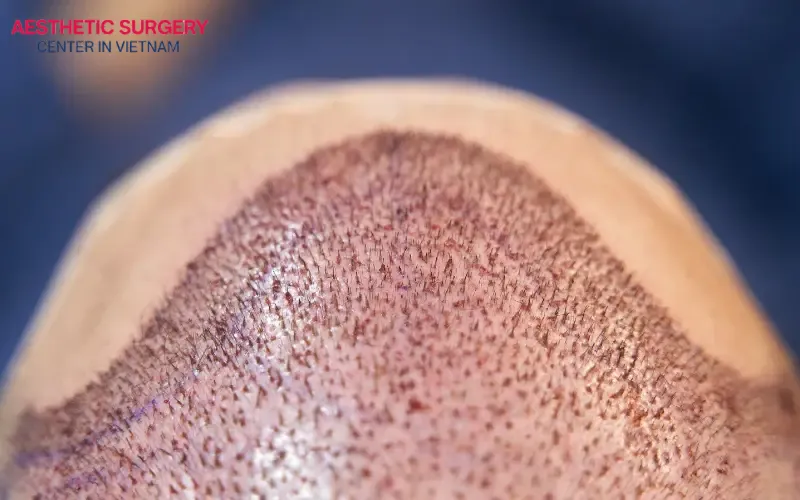
Hair transplants for women before after
To effectively resolve thinning and sparse hair and achieve thick, healthy hair, finding a reputable hair transplant clinic is an important consideration before choosing the procedure. To easily compare the differences before and after hair transplant for women, below are before and after hair transplant images for women that you can refer to:
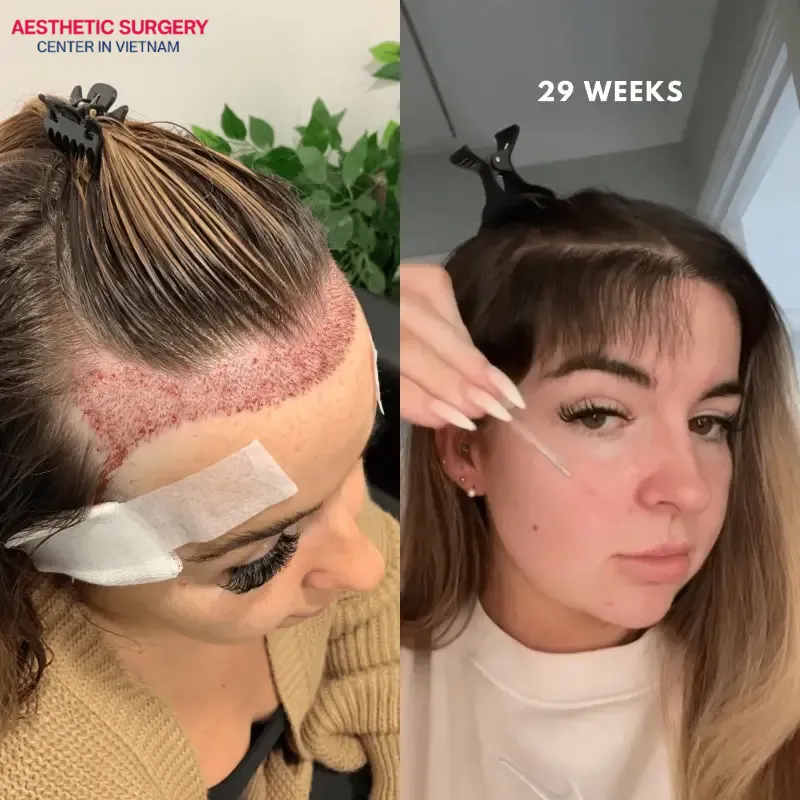
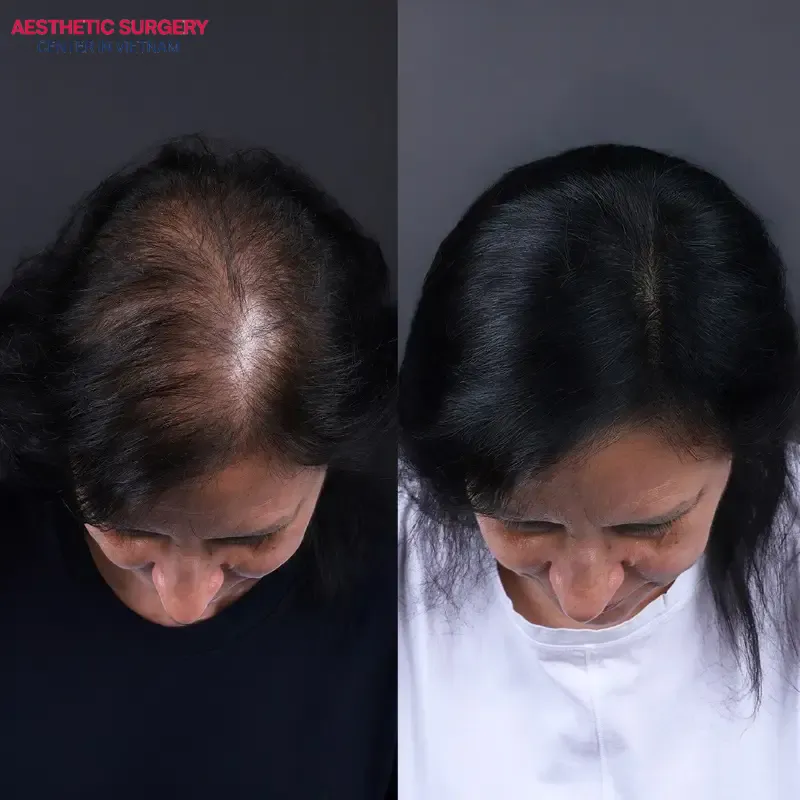
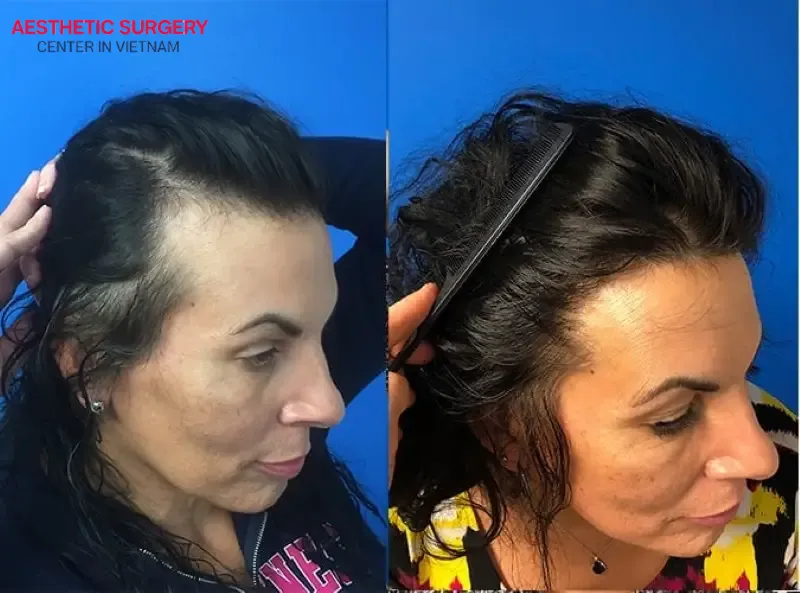
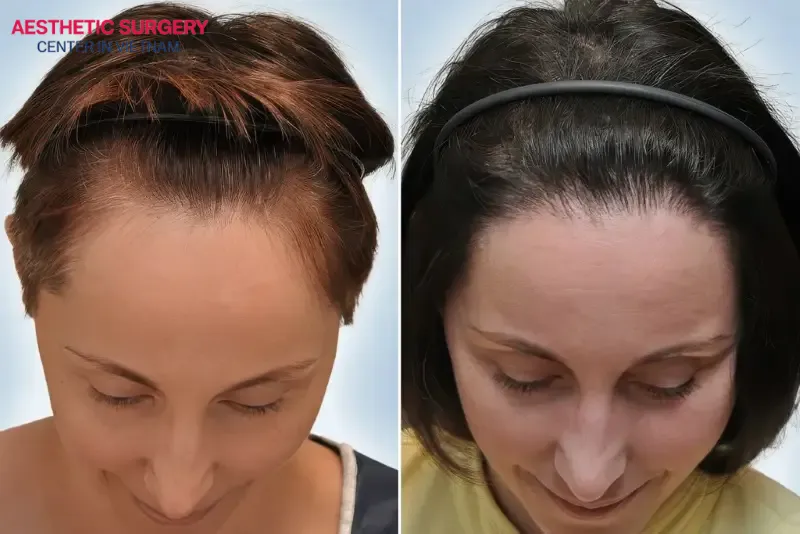
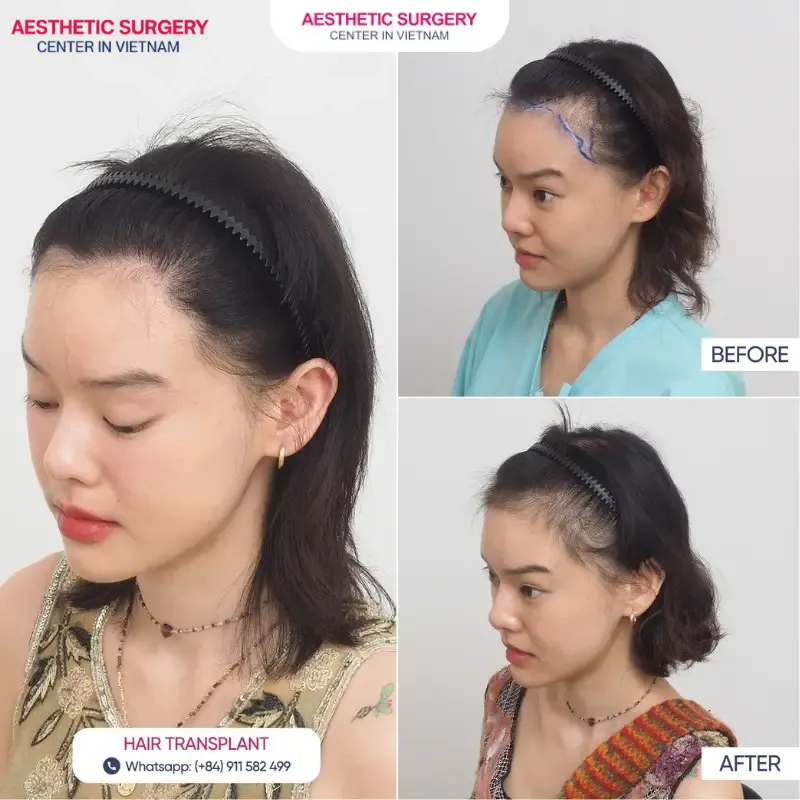
Read more: Stem cell hair transplant – Benefits, Procedure and Cost 2025
Important notes when deciding to have a hair transplant for women
Female hair transplant is not simply a step to change appearance, but also requires strict hair care to achieve optimal results. Below are some post-transplant hair care notes you need to know:
- Keep the scalp continuously moisturized in the first days after transplantation to reduce scab formation and minimize infection risk.
- Avoid scratching, touching, or vigorously washing the transplanted area, especially within the first 10 days, to prevent damage to newly transplanted follicles.
- Do not use styling chemicals, dye, or perm hair for at least the first 30 days after transplantation.
- Avoid direct sunlight exposure and refrain from sauna or intense exercise within the first 2 weeks post-transplant.
- In the first 2 – 4 weeks, transplanted hair will temporarily shed as follicles enter a new growth cycle. New hair will start to grow after 2 – 3 months and show clear results after about 9 – 12 months.
- Follow a healthy diet and increase vitamin intake to help hair follicles recover and stabilize quickly.
- Avoid excessive stress and pressure, as hormonal changes can cause hair loss to return.
- Monitor the transplanted area after the procedure and contact your doctor immediately if any abnormal signs appear on the scalp.
Hair transplant for women and information about suitable candidates for the procedure have been revealed in this article. It can be seen that severe hair loss in women can stem from different causes. Clients wishing to resolve thinning hairlines and sparse hair with advanced hair transplant technology at Aesthetic Surgery Center, please contact 0911 582 499 for consultation.








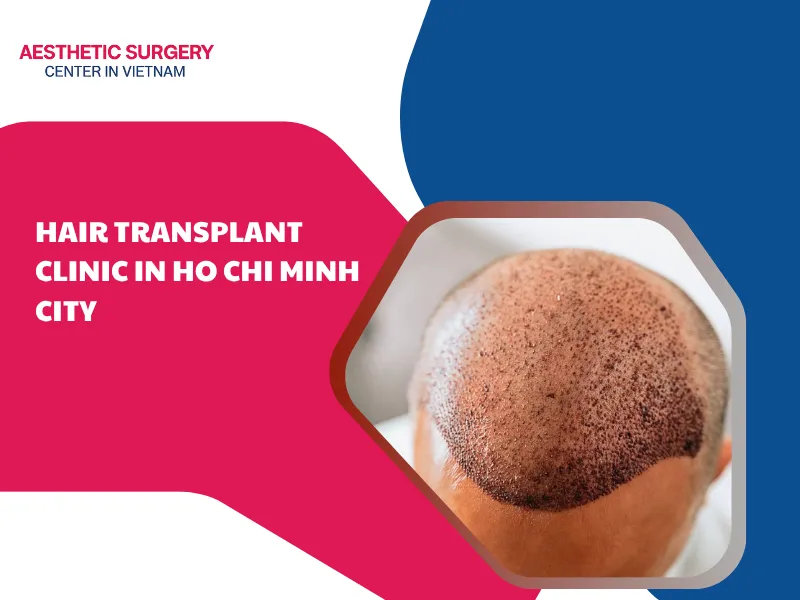
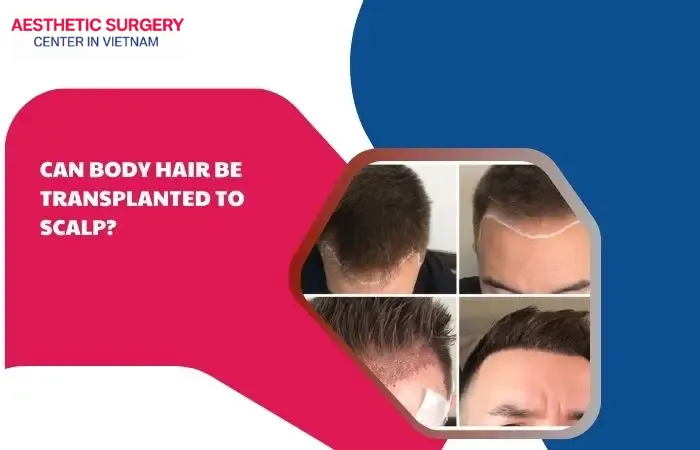

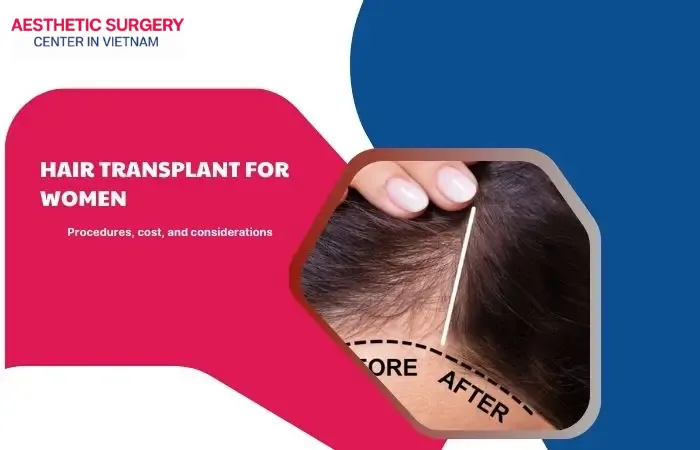
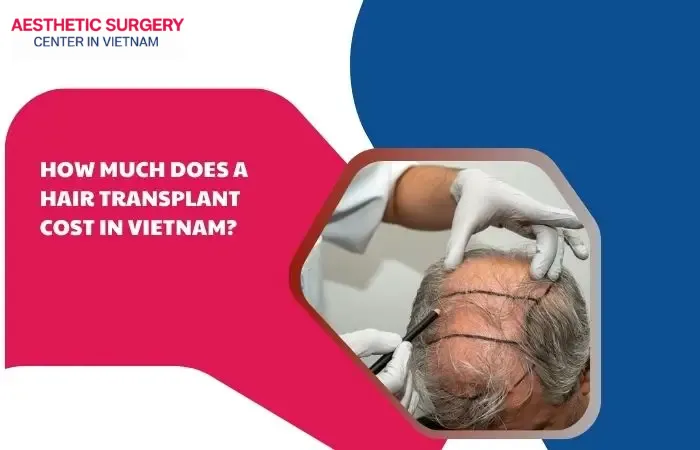




Comment on the post